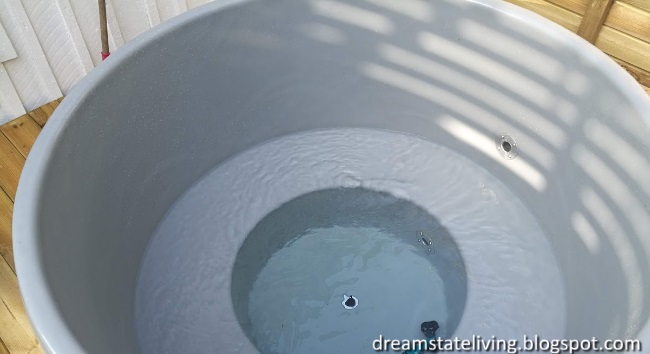
So another alcoholic beverage session coming up. This time we will be brewing mead.
Nothing fancy here. Things that you will need:
- Bucket (or fermenter), 1 is enough 2 could be good if you want to move it to the other vessel after the first fast fermentation is over.
- Water lock
- Thermometer
- Hydrometer
- Something to boil water in
- Various ladles
- Honey. 3-5 kg
- Yeast
- Kitchen scales
- Fermentation stop
I get my honey from my wife's coworker who owns a bee-farm. Mostly honey that is too old to be sold but good enough to brew on. So locally made and free, can't get much better.
Start with boiling some water. Just a little so that you can disinfect the bucket and ladles that you are going to use, don't forget the lid, thermometer and water lock.
Put water on boil. The formula that I've used before is 10 liters of water for 3 kg of honey. This time I think that I will try with a little less water but its still a lot of water. So start boiling.
Weigh and put all the honey in the fermentation bucket. Fill up with boiling water, this will kill any wild yeast and bacteria that is in the honey that can destroy your batch. Stir around to help it dissolve.
After it is dissolved, fill up the hydrometer and check the temperature. Let the test glass cool to 20 Celsius to make a correct reading. When you have the correct temperature, use the hydrometer to do a reading and write down the number as you will need that number when you bottle to calculate the alcohol percentage of the liquid.
If you can't wait for the temperature to reach the calibrated value, you can use a calculator to compensate (for example here)
My reading was 1.100 Specific Gravity at 23 Celsius. i.e. 1.101 SG after compensating for temperature.
At this point you will need to cool the bucket, I usually put on the lid with a water lock and place it outside for a couple of hours. You could I guess use a cooler from beer brewing but I think that is a little overkill for this. Usually it has cooled over night and I can set the yeast.
If you can't wait for the temperature to reach the calibrated value, you can use a calculator to compensate (for example here)
My reading was 1.100 Specific Gravity at 23 Celsius. i.e. 1.101 SG after compensating for temperature.
At this point you will need to cool the bucket, I usually put on the lid with a water lock and place it outside for a couple of hours. You could I guess use a cooler from beer brewing but I think that is a little overkill for this. Usually it has cooled over night and I can set the yeast.
This time I will use wine yeast that needs to be pre-hydrated 15 minutes before usage. Just warm some water to 40 Celsius and stir in a glass. After 15 minutes, put the mix in the fermentation bucket and close the lid. Check that the water lock is sealed and put it somewhere where it can stay for a week or two.
Update some weeks later
Turns out it didn't start fermenting that fast, I probably kept it too cool the first 2 days. Moved the bucket to the living room instead and now it is bubbling. Will probably let it be for some while before testing it the first time.
One year later..
I kind of forgot about that mead keg in the cellar. Some other things on my mind this year.
Turns out that it actually tastes quite nice after 12 months in the fermentation keg. Will keep it for a while more as I do not have anything to tap it to.
Put in the fermentation stop. Clean up some bottles and tap the mead. Ready to drink once cooled
Until next time: Planning an epic bike ride with Strava and Google Earth!
Update some weeks later
Turns out it didn't start fermenting that fast, I probably kept it too cool the first 2 days. Moved the bucket to the living room instead and now it is bubbling. Will probably let it be for some while before testing it the first time.
One year later..
I kind of forgot about that mead keg in the cellar. Some other things on my mind this year.
Turns out that it actually tastes quite nice after 12 months in the fermentation keg. Will keep it for a while more as I do not have anything to tap it to.
Put in the fermentation stop. Clean up some bottles and tap the mead. Ready to drink once cooled
Until next time: Planning an epic bike ride with Strava and Google Earth!

















































